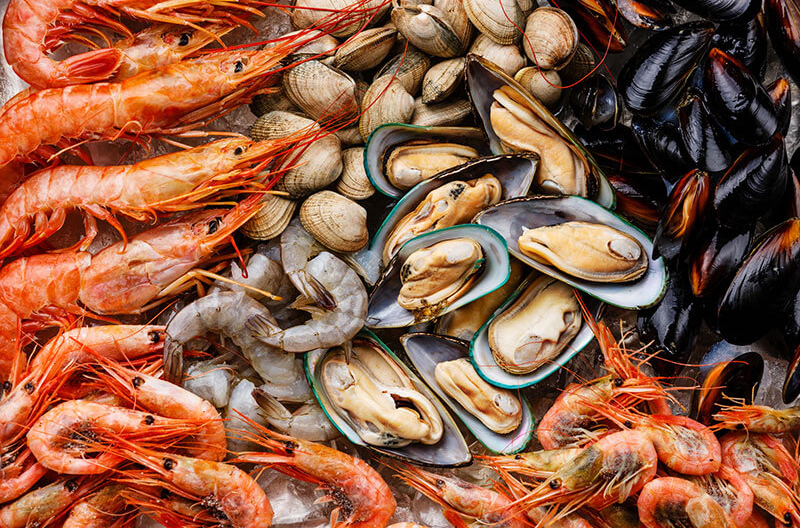Inflation, COVID-19, supply chain and other issues continue to change shopping and consumption patterns. These measures have resulted in prolonged unit and volume pressure across most categories, particularly for seafood. IRI, 210 Analytics and Elanco have partnered together to bring the latest trends and analysis relative to seafood sales at retail.
September seafood inflation was mixed. Frozen seafood and fresh shellfish were below average, with shellfish even experiencing some deflation when compared to last year. However, fresh finfish and shelf-stable seafood experienced per unit price increases right around the average. The gap between the per unit and per volume price for frozen and shelf-stable seafood is widening, which indicates that some items have reduced the pack size to keep the unit size in a favorable range.
The four September weeks brought $58.2 billion in total food and beverage sales, which was up 9.5 percent versus year ago – an improvement over the August performance. Additionally, September dollar sales were up 30.3 percent versus September 2019, the pre-pandemic normal. A lot of the dollar growth performance was closely related to the levels of inflation, which were higher in grocery.
Frozen seafood dollar sales were about $29 million higher than fresh seafood in September. While sales in both areas declined when compared to last year, fresh lost more ground. Only shelf-stable seafood (canned and pouches) increased, at 7.8 percent, though units and volume were down.
In the third quarter of 2022, fresh seafood generated $1.6 million in sales. Despite the inflationary boost, the unit and volume declines were too deep to achieve dollar growth. Total fresh seafood sales were down 7.8 percent in the third quarter, with the majority of the sales decline being driven by fresh shellfish. Compared with 2019, the pre-pandemic normal, dollar sales were far ahead and volume was about the same.
Fresh seafood declines bottomed out in the second quarter of 2022. While still down year-on-year, the comparison improved 7.8 percent in September 2022. The dichotomy between shell fish and finfish remained, with the majority of sales being generated by finfish in addition to finfish having the better year-on-year growth performance.
The four September weeks showed a week-to-week drop from a high of $135 million in the first September week to $111 million for the final week of the month. That last week also had the highest year-on-year declines at 11.5 percent.
Fresh salmon was the top performer in the third quarter of 2022, as well as in the month of September. Fresh salmon alone is bigger than all of fresh shellfish combined. And yet, salmon grew dollars a little under 6 percent while keeping pounds steady in what was a very strong month. Two other areas that improved pound sales were grab and lobster, but both are lapping last year’s declines. Tilapia sales were down more than 20 percent in dollars and more than 40 percent in volume on very high inflation.
To read more from IRI, visit iriworldwide.com/en-us.
For more seafood news from The Shelby Report, click here.

